Tuttul
The Bronze Age town of Tuttul is identified with the archaeological site of Tell Bi'a in Raqqa Governorate, northern Syria. Tell Bi'a is located near the modern city of Raqqa and the confluence of the rivers Balikh and Euphrates.
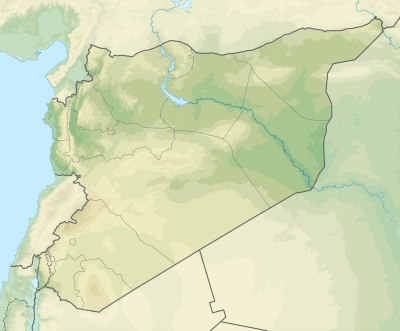 Shown within Syria  Tuttul (Near East) | |
| Location | Syria |
|---|---|
| Region | Raqqa Governorate |
| Coordinates | 35.9575°N 39.0475°E |
| Mari |
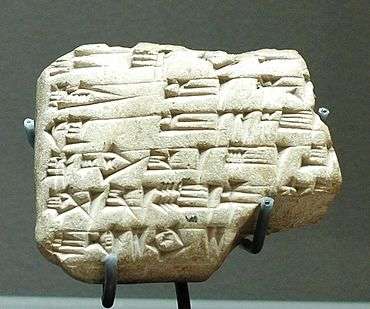 Euphrates • Terqa • Tuttul Royal Palace |
| Kings |
| Yaggid-Lim • Yahdun-Lim Yasmah-Adad Zimri-Lim (Queen Shibtu) |
| Archaeology |
| Investiture of Zimri-Lim Statue of Ebih-Il Statue of Iddi-Ilum |
History
During the Middle Bronze Age (c. 2000–1600 BCE), Tuttul was city sacred to the god Dagan, worshipped across the Ancient Near East. However, the settlement at Tell Bi'a had been occupied since the mid-3rd millennium BCE.[1] This town has sometimes also been called the "Northern Tuttul" with reference to an implied "Southern Tuttul", which was possibly located on the Iraqi Euphrates between the ancient cities of Mari and Babylon. However, this is a debated issue.[2] The identification of the so-called "Southern Tuttul" with modern Hit is uncertain, as Hit is referenced to several times in the Mari archives via its modern name.[3]
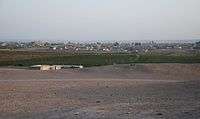 Raqqa and Tell Bias
Raqqa and Tell Bias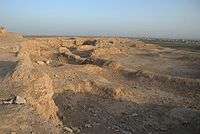 Tuttul
Tuttul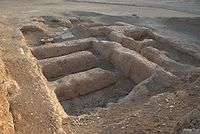 Tuttul tombs
Tuttul tombs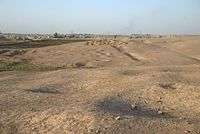 Tuttul
Tuttul
References
- Akkermans, Peter M. M. G.; Schwartz, Glenn M. (2003), The archaeology of Syria. From complex hunter-gatherers to early urban societies (ca. 16,000–300 BC), Cambridge: Cambridge University Press, pp. 255–256, ISBN 0-521-79666-0
- Astour, M.C. (2002), "A reconstruction of the history of Ebla (Part 2)", in Gordon, C.H.; Rendsburg, G.A. (eds.), Eblaitica: Essays on the Ebla archives and Eblaite language, Winona Lake: Eisenbrauns, pp. 57–195, ISBN 978-1-57506-060-6
- Malamat, Abraham (1998), Mari and the Bible, Leiden: Brill, p. 92, ISBN 978-90-04-10863-9
| Wikimedia Commons has media related to Tell Bi'a. |